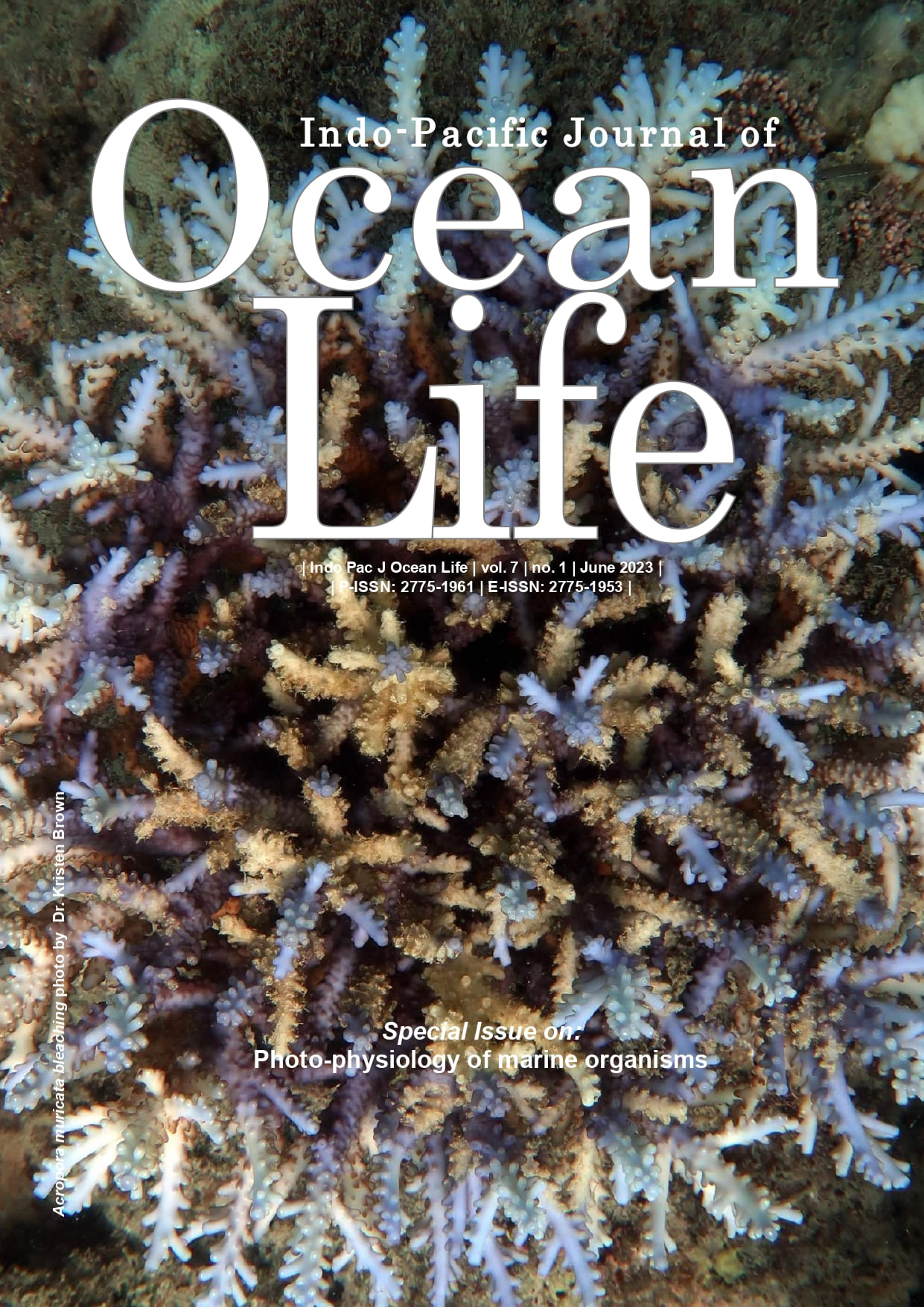Diversity, density and photo-physiology of micro-phytoplankton from degraded and non-degraded reefs around Rodrigues Island, Western Indian Ocean
##plugins.themes.bootstrap3.article.main##
Abstract
Abstract. Soondur M, Kaullysing K, Ramah S, Bhagooli R. 2023. Diversity, density and photo-physiology of micro-phytoplankton from degraded and non-degraded reefs around Rodrigues Island, Western Indian Ocean. Indo Pac J Ocean Life 7: 108-121. This study aimed at investigating the variations in micro-phytoplankton diversity, density and photo-physiology between a degraded, Anse Aux Anglais (AAA) in the north, and a non-degraded, Port Sud-Est (PSE) in the southeast, reefs around Rodrigues Island, Republic of Mauritius. Sampling was carried out in summer and winter seasons from 2016 to 2019 at the two sites, PSE and AAA. Micro-phytoplankton samples were collected using a plankton net of 5µm and conserved with Lugol’s solution. Physico-chemical parameters namely temperature, dissolved oxygen, salinity, and ph were recorded in situ. Seawater samples were collected for nutrient and chlorophyll-a concentration analyses. The Total Micro-Phytoplankton Densities (TMPD) did not differ seasonally for the whole period from 2016 until 2019 but there was a significant difference station-wise (P < 0.01), with higher TMPD recorded at the non-degraded reef of PSE. PSE exhibited the higher species diversity. Diatoms and dinoflagellates were more abundant at PSE while the cyanobacteria showed higher densities at AAA. Genera like Licmorphora, Gonyaulax, Polykrikos, Trichodesmium, and Lygnbya, reported worldwide to possibly cause mortality and/or changing community structure of corals, were recorded at both PSE and AAA though not at blooming densities. Photo-physiological assessment of micro-phytoplankton, using a Diving Pulse-Amplitude-Modulated (D-PAM) fluorometer, varied significantly both seasonally and spatially. These findings indicated that the non-degraded reef site had higher micro-phytoplankton density, diversity and photo-physiological performance than the degraded one, implying that degraded reefs may not only be characterized by the benthic cover and/or their health status but also the biological parameters from the water column.
2017-01-01
